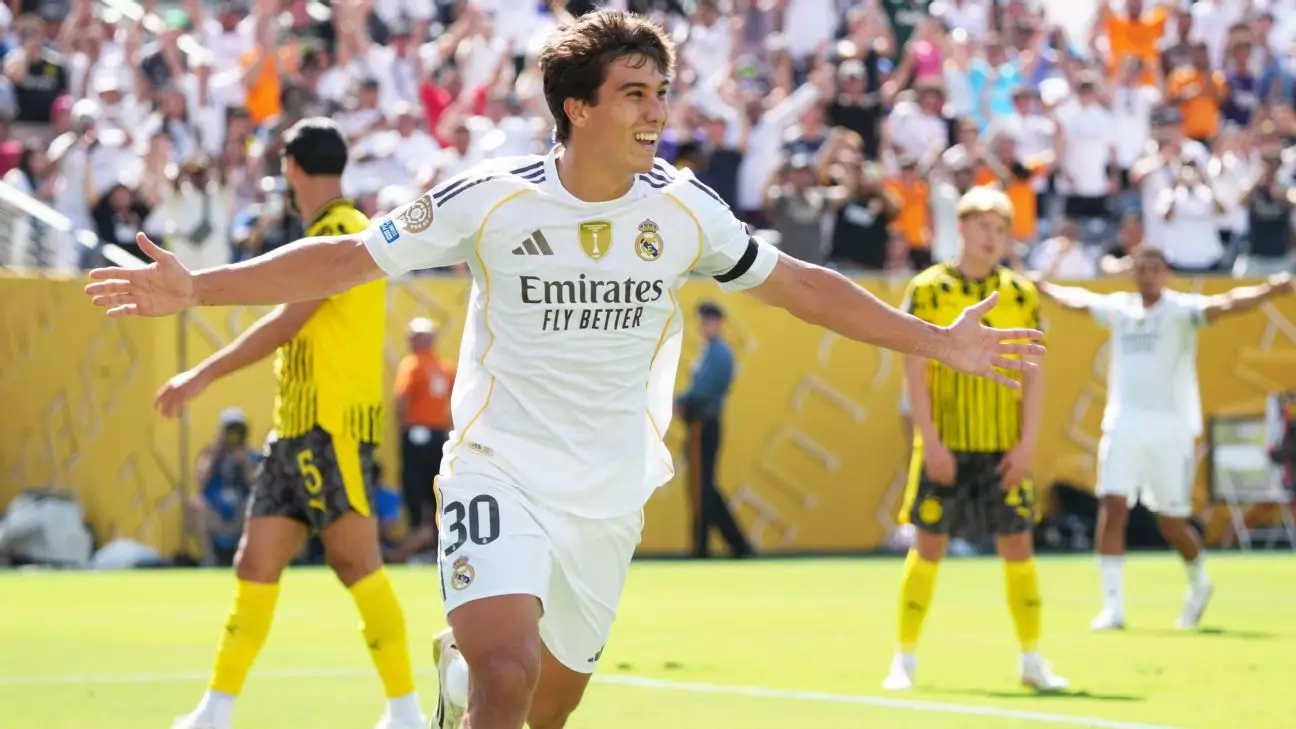In the glitzy world of football, where marquee names often overshadow emerging talents, Gonzalo García’s recent performances at the FIFA Club World Cup have defied expectations and reshaped discussions around Real Madrid’s future prospects. While the world’s eyes fixated on Kylian Mbappé’s breathtaking goal, it was García’s decisive first-half strike that truly captured the tournament’s essence: a reminder that potential isn’t always measured by star power alone but by the hunger and capability of rising players to seize opportunities. This young forward’s ability to outshine seasoned teammates in critical moments underscores a broader narrative—one where genuine talent can challenge established hierarchies, provided the environment nurtures it.
What makes García’s emergence notable isn’t just his goal tally but the manner in which his skills are revealing cracks in the traditional player development model at Madrid. Historically, Real Madrid’s youth system has struggled to produce sustained first-team opportunities for homegrown forwards, often overshadowed by the club’s star-studded roster of Galácticos. Yet, García’s approach—combining exceptional movement, tactical awareness, and relentless work ethic—hints at a transformative shift in Madrid’s talent management. He exemplifies the kind of player who, if given the right platform, could redefine the club’s attacking philosophy and challenge the dominance of current stars like Mbappé, Vinícius Júnior, and Jude Bellingham.
From Promising Prospect to Potential Game-Changer
García’s rise within the tournament highlights a broader debate around the importance of mental resilience and opportunity in football’s player development pipeline. Before this breakthrough, he was primarily seen as a promising talent, with limited appearances and modest goal-scoring record in Spain’s lower tiers. But his five matches during the Club World Cup have transformed that perception, as he has scored four goals and contributed an assist. Such impactful performances are often the catalyst for future success—yet they also pose challenging questions for Madrid’s coaching staff.
The delicate issue for Real Madrid isn’t just about individual brilliance but about maintaining squad harmony. The club is notorious for its preexisting hierarchy, where established icons tend to get priority over younger players striving to carve their niche. Consequently, García’s recent heroics provoke a dilemma—should he be integrated into the first-team plans now, or remain a promising asset on the fringes, waiting for a breakthrough that may not materialize? This tension reflects Madrid’s complex balancing act: nurturing youth while safeguarding their quest for continued glory with proven stars.
Furthermore, the club’s historical record offers a sobering perspective. Over decades, several talented young strikers—Negredo, Mata, Jesé, and others—flashed promise only to be sidelined by veterans or hampered by limited opportunities. The shadow of such history looms over García’s positive momentum. Does this mean we are destined to another cycle of talent being cultivated but ultimately sidelined? Or can a new managerial philosophy, led by Xabi Alonso, finally create an environment where local talent is given space to thrive?
The New Dawn or A Temporary Resurgence?
Under the stewardship of Alonso, García’s performance has provided a glimpse of what modern, youth-friendly coaching can achieve. Unlike past Madrid regimes that prioritized immediate results with veteran reliability, Alonso appears committed to integrating promising young players like García into a cohesive, adaptable team. His discipline and work rate resonate with the tactical demands of the modern game, positioning García as not just an isolated scorer but a versatile asset capable of fitting different tactical setups.
However, the path forward remains fraught with challenges. The attack is crowded with talent: Mbappé, Vini Jr., Rodrygo, and Endrick—each vying for limited spots. The statistics from the tournament suggest García’s stock is rising, and many clubs across Europe would eagerly loan or purchase him. But Real Madrid, known for their ruthless talent competition, might leverage García’s rising value either to strengthen their squad or to negotiate player exchanges that fit their strategic ambitions.
What remains to be seen is whether this recent surge will translate into sustained first-team inclusion or if it will serve merely as a temporary showcase. Historically, talented youngsters have often been sacrificed or overlooked, especially if they don’t immediately rise to superstardom. Yet, García’s current trajectory, combined with Alonso’s evident faith and the player’s evident qualities, hints at a possible turning point—one where Madrid could, for the first time in a while, truly nurture and utilize homegrown attacking talent with patience and purpose.
This story isn’t just about a single tournament or a fleeting moment of glory; it questions Madrid’s longstanding approach to youth development and spells out a potential new chapter. The objective should be clear: foster the next generation of starlets who can contribute both as future household names and as integral parts of a winning squad. Whether García can transcend the usual limitations and carve out a genuine legacy depends on the club’s willingness to adapt, trust, and give young talent the platform it deserves.

